|
|
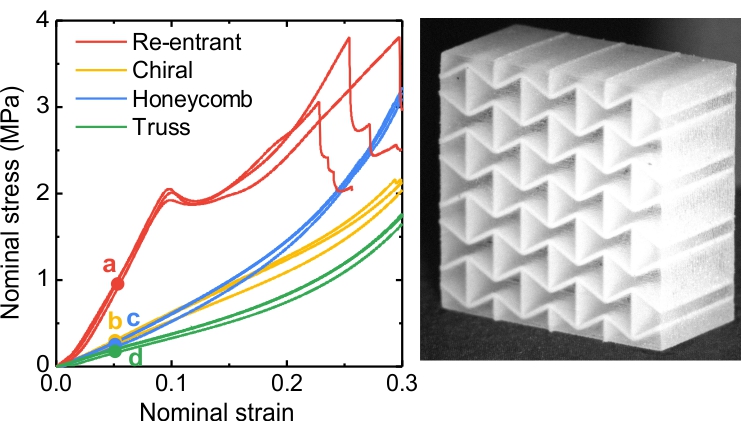
|
Auxetic Composites with Enhanced Mechanical Performance
Auxetic materials exhibiting a negative Poisson’s ratio are shown to have many desirable properties and broad potential applications. Here, we report a class of high-performance composites in which auxetic lattice structures are used as the reinforcements and the nearly incompressible soft material is employed as the matrix. This coupled geometry and material design concept is enabled by the state-of-the-art additive manufacturing technique. Guided by experimental tests and finite element analyses, we systematically study the compressive behaviour of the 3D printed auxetics reinforced composites and achieve a significant enhancement of their stiffness and energy absorption.
|
|
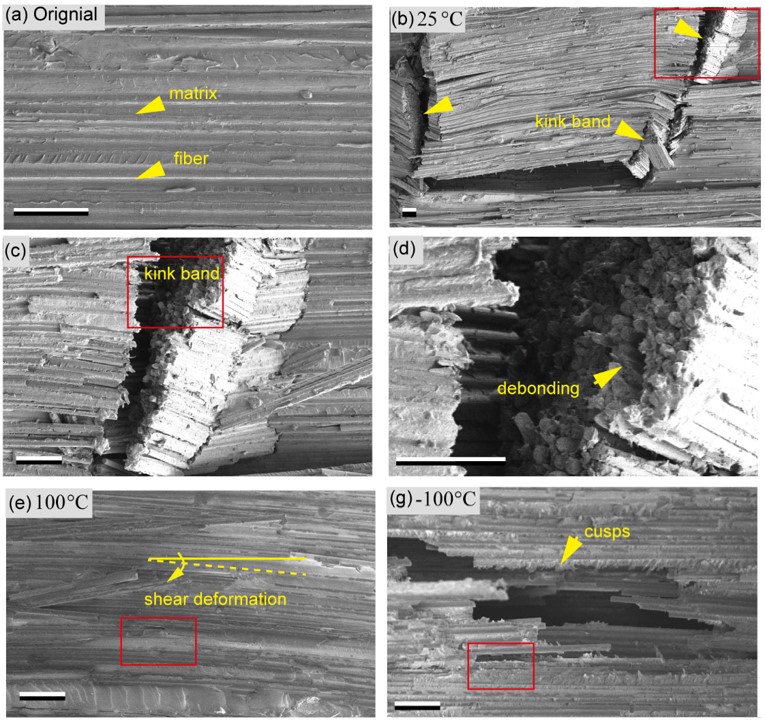
|
Extreme Temperature Effect on Carbon Fiber Reinforced Polymer Composites
Carbon fiber reinforced polymer (CFRP) composites are increasingly used in civil, naval, aerospace, and wind energy applications, where they can be frequently exposed to harsh temperature conditions and under static and dynamic loads. The extreme temperature conditions and dynamic loading are critical for CFRP composites structural design as the constituent polymer properties are highly sensitive to temperature and strain rate. This work experimentally investigates the effect of temperature, ranging from -100 °C to 100 °C, on the mechanical properties of CFRP composites under static and dynamic three-point bending tests. The results reveal that CFRP composites provide enhanced flexural strength, maximum deflection, and energy absorption at lower temperatures (-60 °C, -100 °C) while relatively poor performance at a higher temperature (100 °C).
|
|
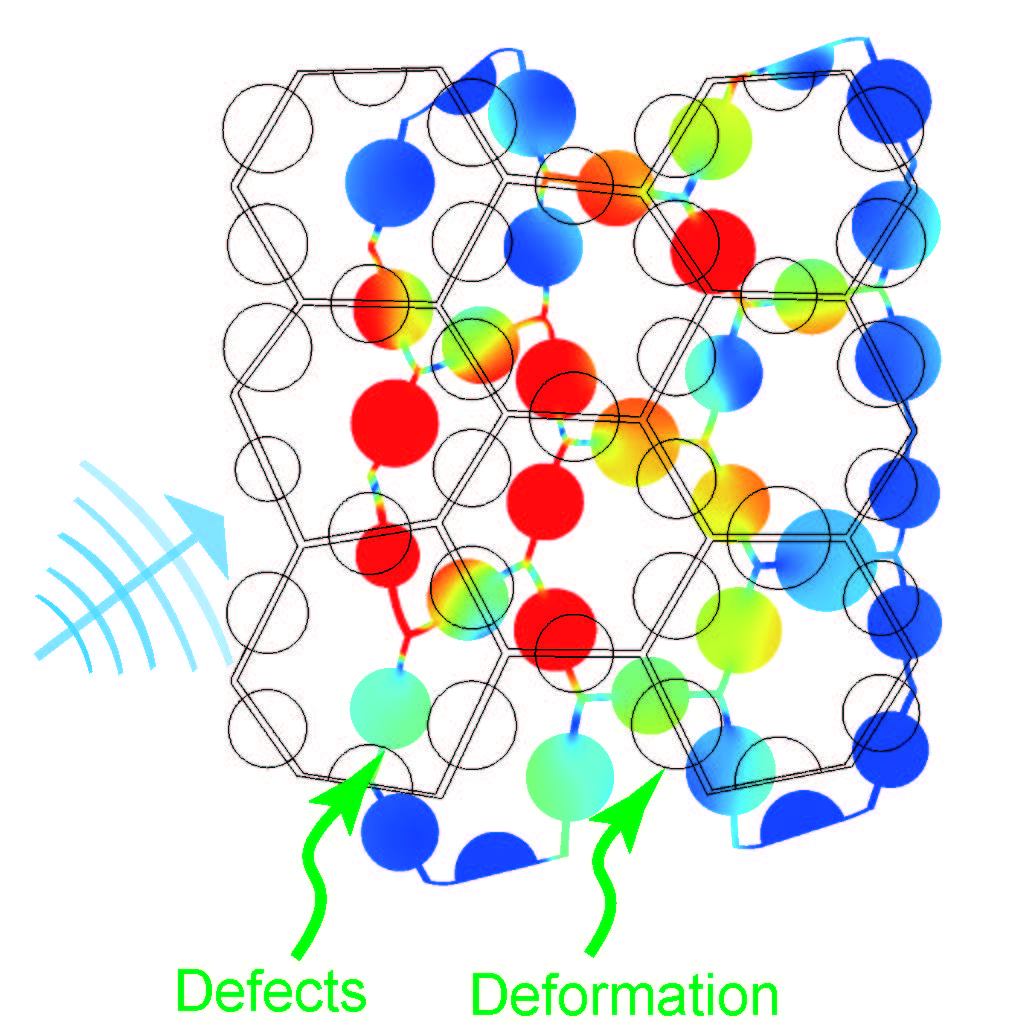
|
Phononic Crystals with Wide and Robust Band Gaps
Having a wide and robust phononic band gap is important for controlling mechanical waves in a real device that is imperfect or deformable. Band gaps due to Bragg scattering can be wide, but are intrinsically sensitive to imperfections and deformations, while those due to local resonances are robust, but typically narrow. By combining these two mechanisms (with the latter dominating), this study realizes simultaneously large and resilient band gaps, showing that suppression of instability is essential for robustness against deformation. This approach can drive applications such as devices for wave modulation, and thin-layer materials to control noise or vibration.
|
|
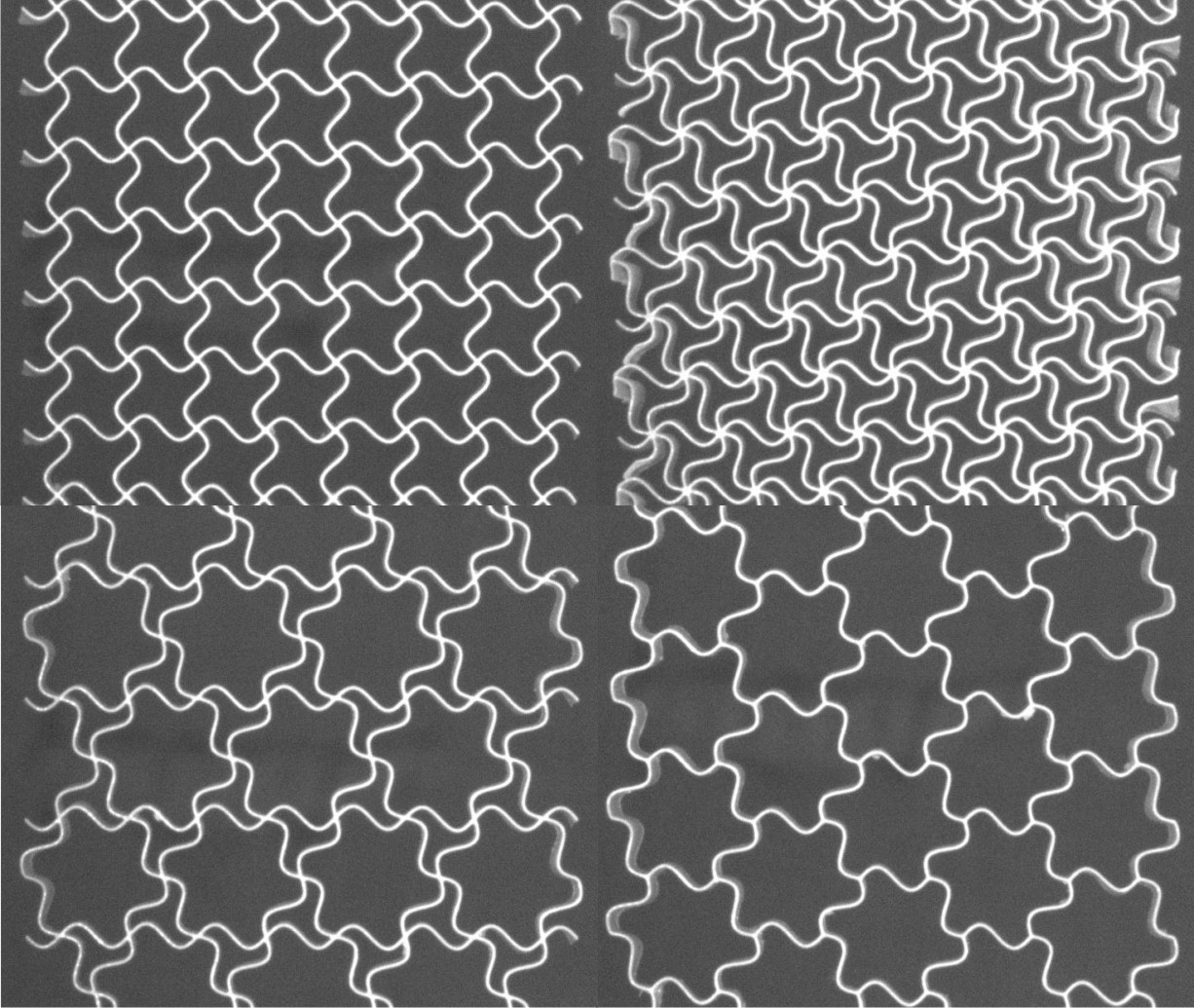
|
Lattice Metamaterials for Vibration Control
Metamaterials with artificially designed architectures are increasingly considered as new paradigmatic material systems with unusual physical properties. Here we report a class of architected lattice metamaterials with mechanically tunable negative Poisson’s ratios and vibration mitigation capability. The material design strategy provides insights into the development of classes of architected metamaterials with potential applications including energy absorption, tunable acoustics, vibration control, responsive devices, soft robotics, and stretchable electronics.
|
|

|
Composites for Soft Robotic Applications
The field of soft robotics has inspired recent mechanical engineering and materials science innovations to enable shape-shifting systems to be developed. We present the design and analysis of a novel thermally tunable composite, namely, a flexible open-cell foam coated in wax that can achieve significant ranges of stiffness, strength, and volume.
|
|
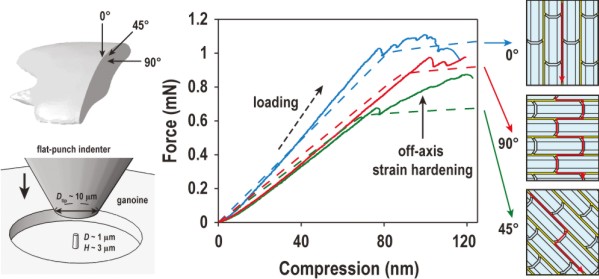
|
Biological Hard Composite Materials
A common feature of the outer layer of protective biological exoskeletons is structural anisotropy. Here, we directly quantify the mechanical anisotropy and fracture of an individual material layer of a hydroxyapatite-based nanocomposite exoskeleton.
|
|
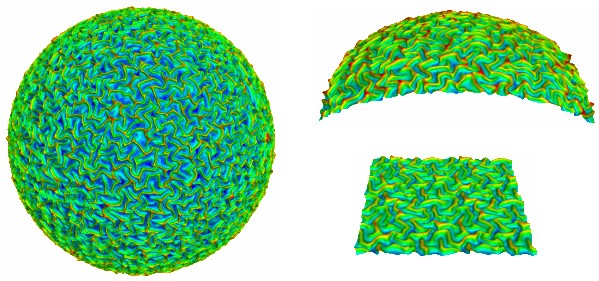
|
Wrinkled Membrane Morphology of White Blood Cells
The membranes of white blood cells possess a highly corrugated or wrinkled surface topology. This topology provides excess surface area which serves as a reservoir for membrane expansion during osmotic swelling and for membrane mediated events such as adhesion and sensing.We explore and model the dynamic development of the wrinkled morphology to arise from buckling instabilities triggered by the deformation mismatch between the membrane and the cytoskeleton during membrane growth.
|
|

|
3D Acoustic Metamaterials
The band structure and sound attenuation of the triply periodic co-continuous composite materials with simple cubic lattice, body-centered cubic lattice, and face-centered cubic lattice are investigated. Complete band gaps are found in these structures and the width of band gaps is depending on volume fraction.
|
|
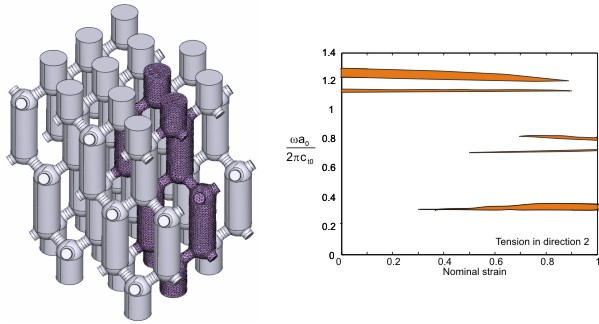
|
Mechanically Tunable Phononic Band Gaps
Three-dimensional periodic structures have many applications in acoustics and their properties are strongly related to structural details. Here we demonstrate through simulations the ability to tune the phononic band gaps of 3D periodic elastomeric structures using deformation. The elastomeric nature of the material makes the transformation of the band gaps a reversible and repeatable process, providing avenues for the design of tunable 3D phononic crystals such as sonic switches.
|
|
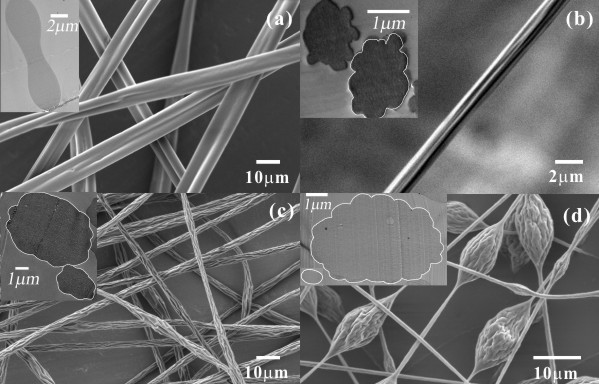
|
Wrinkled Surface Topographies of Electrospun Polymer Fibers
Electrospun polymer fibers are shown to have wrinkled surface topographies that result from buckling instabilities during processing. A glassy shell forms on the surface of the gel-like core during solvent evaporation; continued evaporation leads to a contraction mismatch between the core and shell that triggers buckling of the shell.
|
|
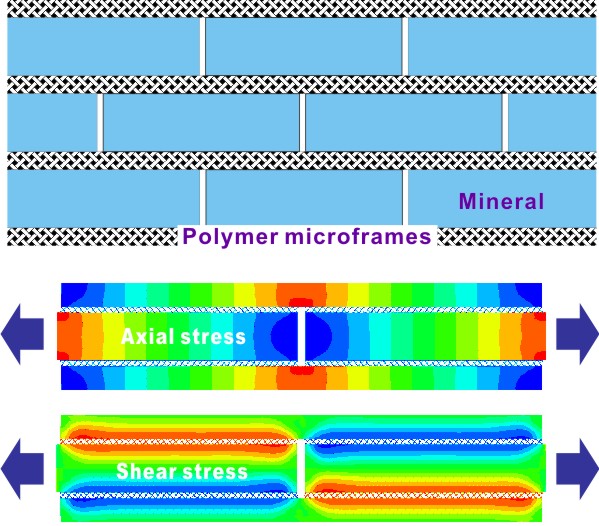
|
Bio-Inspired Structural Materials
Nature has inspired the design of improved synthetic materials that achieve superior and more efficient mechanical performance. Here microstructures inspired by the inner nacreous layer of seashells are designed and their mechanical properties including stiffness, strength, and energy dissipation are computed using micromechanical analysis. The hierarchical mineral/polymer microstructure can be tailored to achieve not only stiffness and strength, but also lateral plastic expansion during tension providing a volumetric energy dissipation mechanism.
|
|
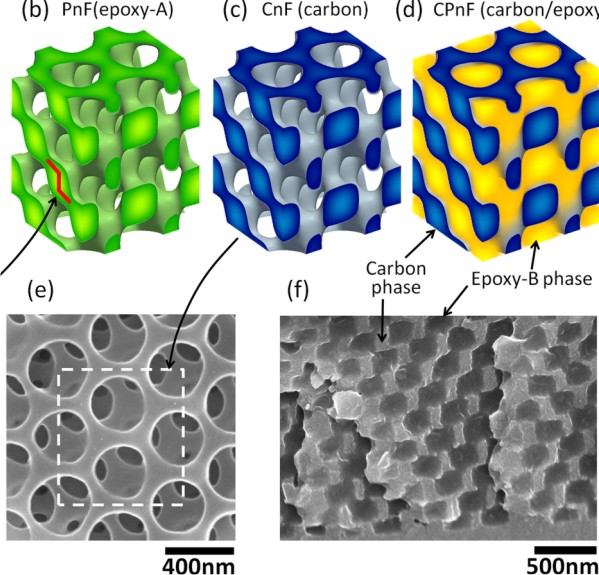
|
Periodic Bicontinuous Composites for High Specific Energy Absorption
Mechanical behavior of an interpenetrating carbon/epoxy periodic submicrometer-scale bicontinuous composite material fabricated following the design principles deduced from biological composites. Such bicontinuous nanocomposites are a new type of structural metamaterial with designed cell topology and mechanical anisotropy. Their inherent small length scale can play a critical role in prohibiting segregated mechanical responses leading to flaw tolerance.
|
|
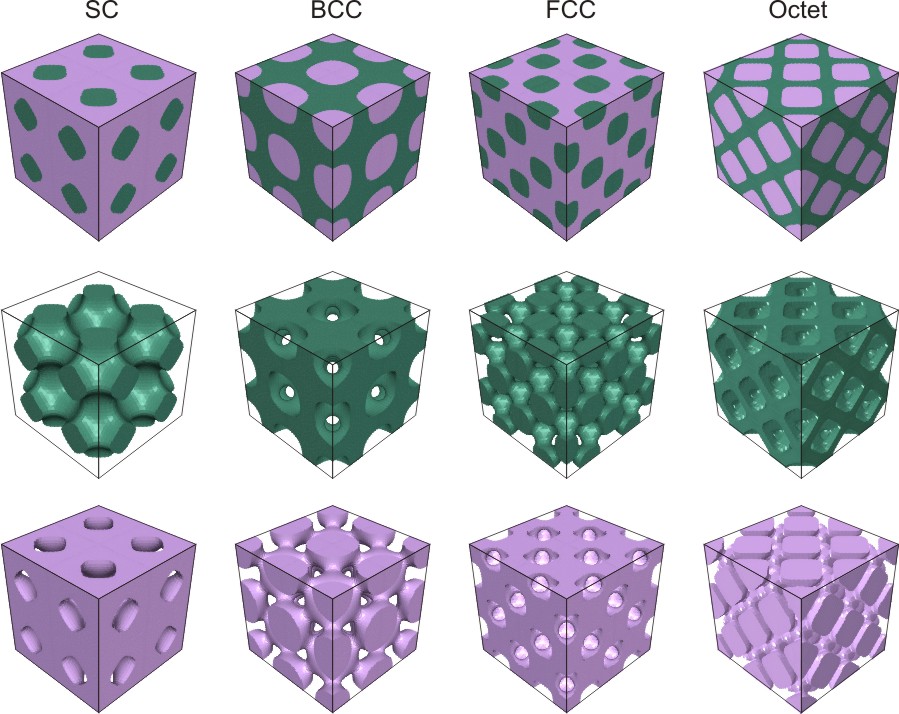
|
Co-Continuous (Interpenetrating Phase) Composites
Co-continuous polymer composite materials are designed and fabricated to achieve enhancements in stiffness, strength, and energy dissipation. The mutual constraints between two phases of the co-continuous structure enable enhanced dissipation by spreading of the plastic deformation and by containing cracking leading to a multitude of non-catastrophic dissipative events, which also provides damage tolerance of the co-continuous composites.
|
|
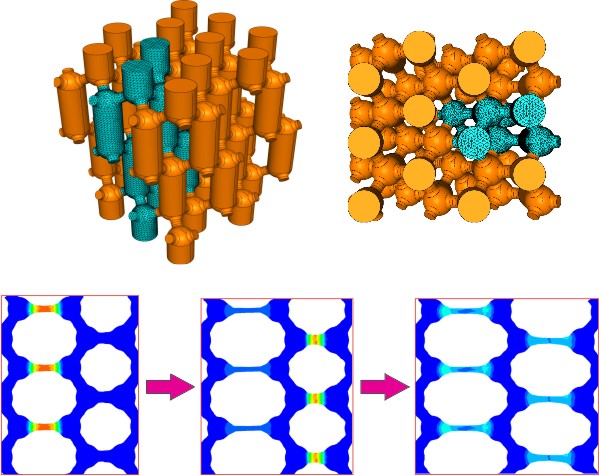
|
Plastic Dissipation Mechanisms in Periodic Microframe-Structured Polymers
Novel lightweight micro- and nanostructured materials are being used as constituents in hierarchically structured composites for providing high stiffness, high strength, and energy absorbing capability at low weight. Three dimensional SU-8 periodic microframe materials with submicrometer elements exhibit unusual large plastic deformations.Here, the plastic dissipation andmechanical response of polymeric microframe structures is investigated using micromechanicalmodelingof large deformations.Finite element analysis shows that multiple deformation domains initiate, stabilize, and then spread plasticity through the structure; simulated deformation mechanisms and deformation progression are found to be in excellent agreement with experimental observation.
|
|
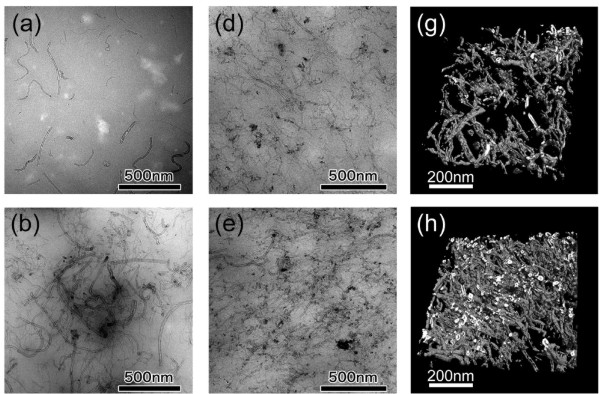
|
Carbon Nanotubes and Composites
Fundamental mechanics of nanomaterials especially for carbon system, including carbon nanotubes and graphite, as well as carbon nanotube composites.
|
|
Lifeng Wang @ Stony Brook University
|
|

